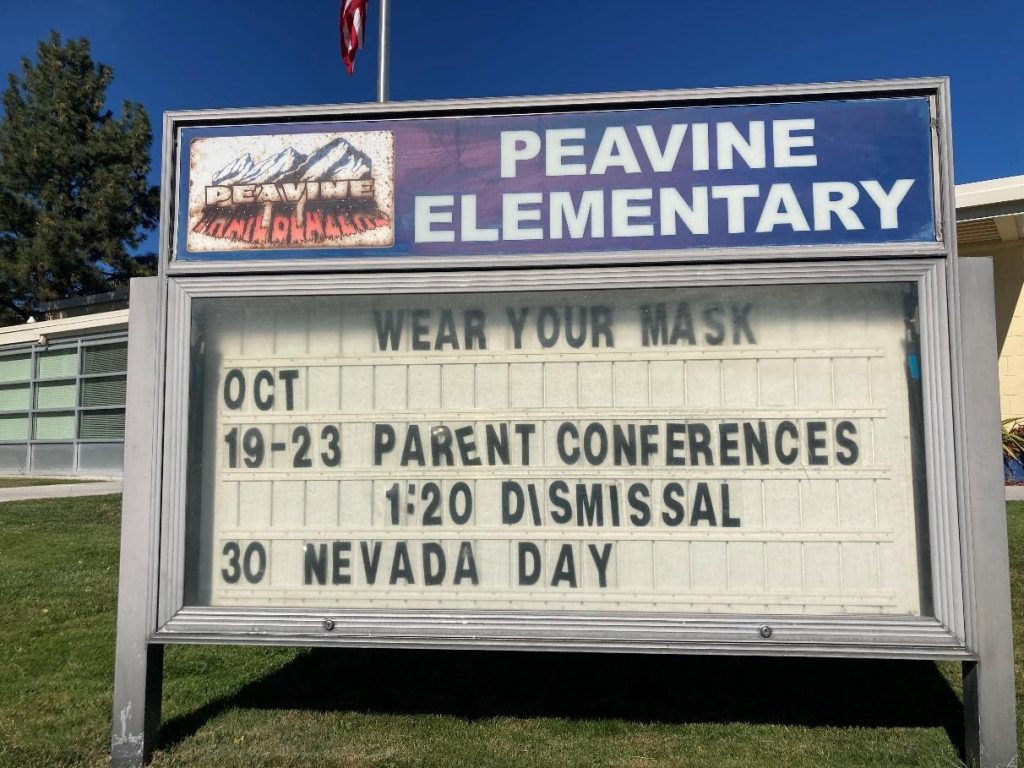
Face coverings, distance learning, and barren playgrounds. This is the “new normal” for the education system, and for students with special needs, remote learning presents unique challenges. Due to difference in their processing, students with autism learn and adapt differently from other children. So, during this pandemic, the education of students with autism has been disrupted – and not only their education routine, but also their at-home routine.
Shower. Brush teeth. Get dressed.
Now, fifteen minutes of playtime.
Socks. Five minute break. Shoes on.
From timers to picture schedules, when it comes to individuals with autism, routine is an absolute necessity. In order to navigate through the social world that is difficult for them to understand, a concrete routine allows autistic individuals to function at their best.
Chandra Watkins, mother of nine-year-old Jet, describes distanced learning as a heavy challenge on her family. While her autistic son attends school for part of the day, the mornings consist of online learning.
Like many families, both Chandra and her husband work outside the home– specifically, she and her husband both work in law enforcement. This already presents a challenge in helping Jet with his schoolwork because they work odd hours. Jet occasionally attends his grandmother’s house for online learning.
While other nine years old understand the task that needs to be done with minimal guidance from a parental figure, Chandra says, she has to sit right at Jet’s side for the entire duration of his online learning time.

Cues and time markers made Jet’s world go round, but now with a new system of learning, the balance has been thrown off. Although other students Jet’s age may understand why they have more homework and can understand the dynamic of the pandemic – Jet has a harder time. He just doesn’t understand.
In terms of social concepts, it is not that individuals with autism are not able to be social or complete social tasks – and it is not that they do not care. It is that they do not understand.
University of Nevada, Reno professor in speech pathology and ideology, Debra Vigil, says students with autism may have a difficult time grasping aspects called “theory of mind.” Theory of mind is being able to understand that other people have different thoughts and feelings from yours. Individuals with autism want to learn and are willing, but getting there is the challenge.
Remote learning upends routine
While some school districts in Nevada are allowing in person learning, many schools are including a hybrid mix of in person and distanced learning. This is already difficult for students to get a handle on, and it presents a larger issue for individuals with autism. Not having a concrete routine and set schedule of a complete school day is confusing and unstable.
Similar to how some students have lost their season of playing sports or are missing out on a semester of a theater production, students with autism are missing out on things essential to their functioning and development. Things such as therapy, speech practice, social practice, and aide assistance.

Chandra said during the shutdown from February to just this August, Jet could not attend speech therapy or occupational therapy.
“We went completely backwards when it came to everything. From speech to behavior, he just wasn’t getting those interactions through school.” Chandra says.
Vigil says before the learning transition, she was able to work with autistic students out in the world to give them real practice. They could step into a therapy room and interact hands on with other people, they could be motivated to work outside of their comfort zone.
Before COVID, “there was a lot more feedback that we can give in terms of social practice. And it’s a little bit harder to do this now because we can’t bring people in. Over the summer we did have other students come into the zoom room and speak to this student. But it is still odd, and not the same.”
Lost opportunities for social growth
For nine-year-old Jet, his issue regarding distance learning is that he struggles with being able to sit still and to focus on the task at hand. Chandra knows that it is not like other kids, where they can be told “this is what you need to get done for this class” and they can complete it themselves with minimal help. With Jet, it is a slow and delicate process where she sits beside him and goes through every single task and instruction for his classes.

Vigil has encountered the same situation with some of the autistic students she works with over zoom. One student she is working with just can’t grasp what it is they are supposed to be doing online. He cannot connect how this will work, learning through the computer, and in the comfort of his home away from a regulated school routine – he prefers to not do the work, considering it is much more challenging for him to complete.
“Trying to get him to understand and then to carry it through in this time when he is more comfortable staying at home at his computer – we can’t push him a little more. That’s the struggle,” Vigil says.
Another student Vigil works with, struggles in asking questions. Socially, her autistic disorder keeps her from being assertive when she does not understand the content or has to ask a question. And while she is home, and Vigil cannot be present with her, it creates an issue in aiding autistic students.
Online interactions may reinforce stigmas
In COVID times, not only are individuals with autism having their routine and real life social practice disrupted, but the general stigma against autism is further solidified.

Chandra described many situations as people just simply not wanting to speak to Jet because they know he has autism. People assume Jet does not want to participate or can’t participate, so they don’t reach out. She says “Just because he has autism, doesn’t mean he can’t do things.”
Vigil says when it comes to the misunderstanding of autism, a majority of people treat it as a death sentence.
“They don’t know what it means, they are afraid, they think it is a death sentence, and then once they realize it is just a kid. Things change. But it takes a while for people to adjust. And once they see a child, they realize that that child can do various different things.”

Vigil says that autistic students want to be accepted like every other student. They want to learn, they want to understand, and be included. And that desire is particularly strong during this time of disconnection.
“They want to have a friend. They do want to play. They do want to interact. If people can learn to accept the differences it’ll be so much easier. For them and for us,” Vigil says.
Chandra wants to remind parents that it’s the small things that count. While some days will be good, other days will be heinous. The world may feel like it is ending, but a new day will come – and will be different.
While it may seem like your autistic student isn’t succeeding in school, remember to consider the wins of the day. What are they succeeding at? What did they smile about today? What did they accomplish?
“Remind yourself it is a spectrum. You have to break it down into the little wins. Otherwise you’ll get sucked into the ‘my kid isn’t doing good’ but if you are instead like – my kid screamed ten times instead of twenty – then that is the win. We are moving forward,” says Chandra.





